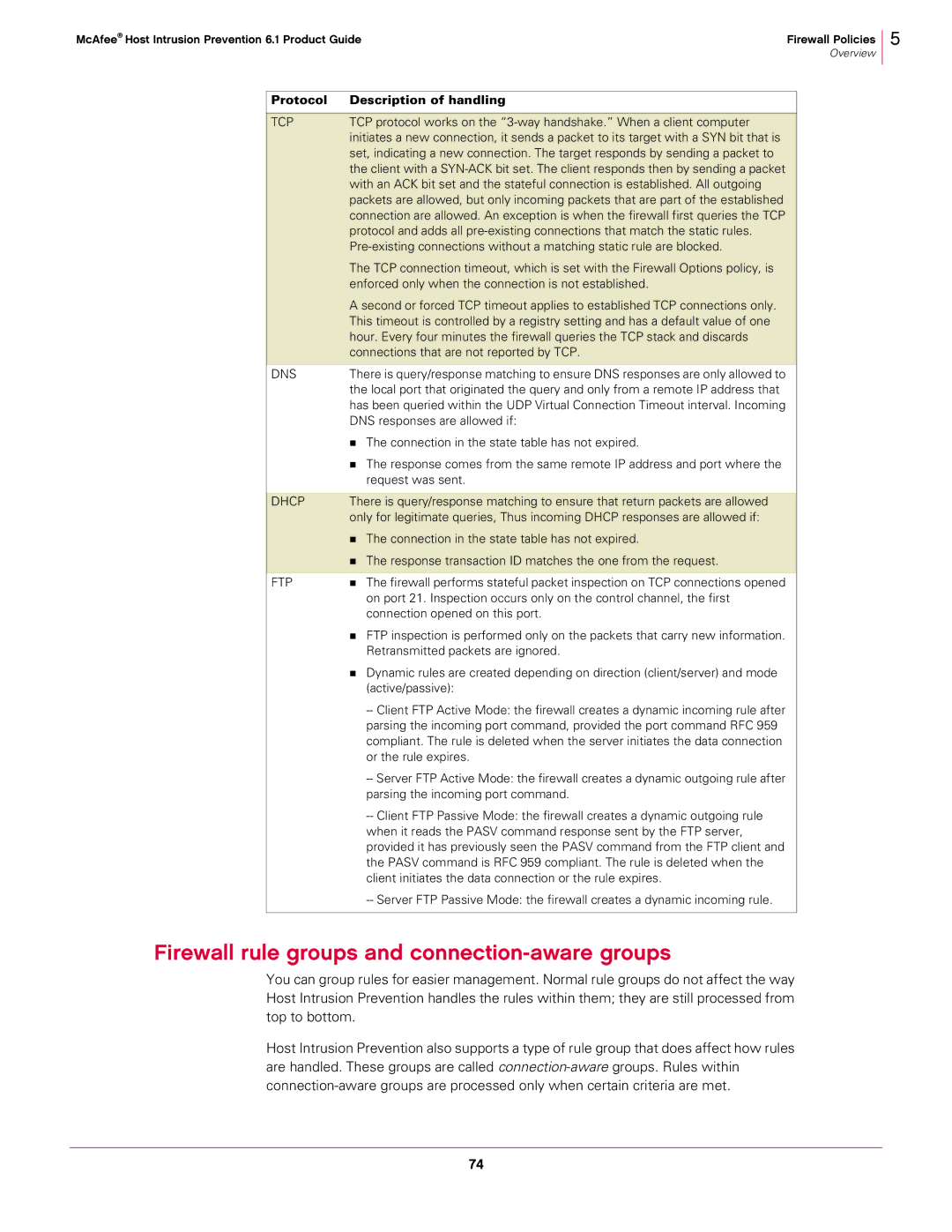
McAfee® Host Intrusion Prevention 6.1 Product Guide | Firewall Policies |
| Overview |
5
Protocol | Description of handling |
|
|
TCP | TCP protocol works on the |
| initiates a new connection, it sends a packet to its target with a SYN bit that is |
| set, indicating a new connection. The target responds by sending a packet to |
| the client with a |
| with an ACK bit set and the stateful connection is established. All outgoing |
| packets are allowed, but only incoming packets that are part of the established |
| connection are allowed. An exception is when the firewall first queries the TCP |
| protocol and adds all |
| |
| The TCP connection timeout, which is set with the Firewall Options policy, is |
| enforced only when the connection is not established. |
| A second or forced TCP timeout applies to established TCP connections only. |
| This timeout is controlled by a registry setting and has a default value of one |
| hour. Every four minutes the firewall queries the TCP stack and discards |
| connections that are not reported by TCP. |
|
|
DNS | There is query/response matching to ensure DNS responses are only allowed to |
| the local port that originated the query and only from a remote IP address that |
| has been queried within the UDP Virtual Connection Timeout interval. Incoming |
| DNS responses are allowed if: |
| The connection in the state table has not expired. |
| The response comes from the same remote IP address and port where the |
| request was sent. |
|
|
DHCP | There is query/response matching to ensure that return packets are allowed |
| only for legitimate queries, Thus incoming DHCP responses are allowed if: |
| The connection in the state table has not expired. |
| The response transaction ID matches the one from the request. |
|
|
FTP | The firewall performs stateful packet inspection on TCP connections opened |
| on port 21. Inspection occurs only on the control channel, the first |
| connection opened on this port. |
| FTP inspection is performed only on the packets that carry new information. |
| Retransmitted packets are ignored. |
| Dynamic rules are created depending on direction (client/server) and mode |
| (active/passive): |
| |
| parsing the incoming port command, provided the port command RFC 959 |
| compliant. The rule is deleted when the server initiates the data connection |
| or the rule expires. |
| |
| parsing the incoming port command. |
| |
| when it reads the PASV command response sent by the FTP server, |
| provided it has previously seen the PASV command from the FTP client and |
| the PASV command is RFC 959 compliant. The rule is deleted when the |
| client initiates the data connection or the rule expires. |
| |
|
|
Firewall rule groups and connection-aware groups
You can group rules for easier management. Normal rule groups do not affect the way Host Intrusion Prevention handles the rules within them; they are still processed from top to bottom.
Host Intrusion Prevention also supports a type of rule group that does affect how rules are handled. These groups are called
74
